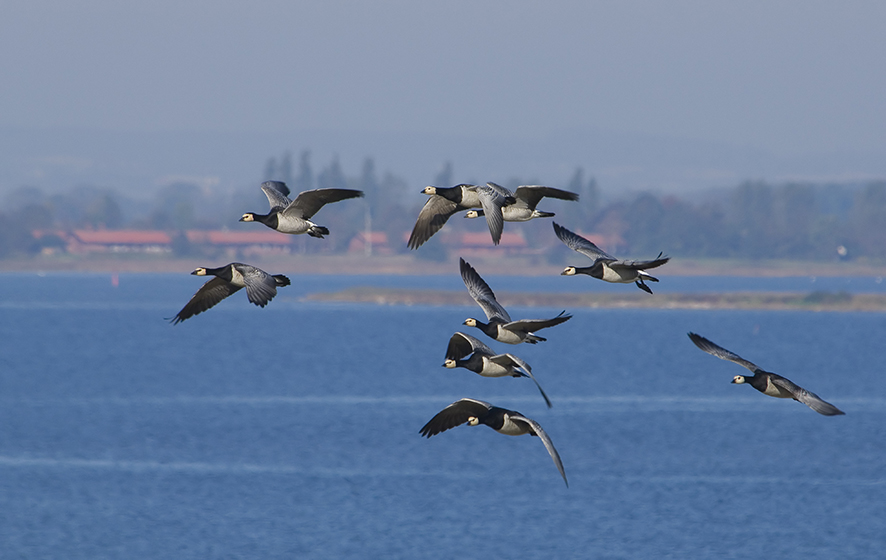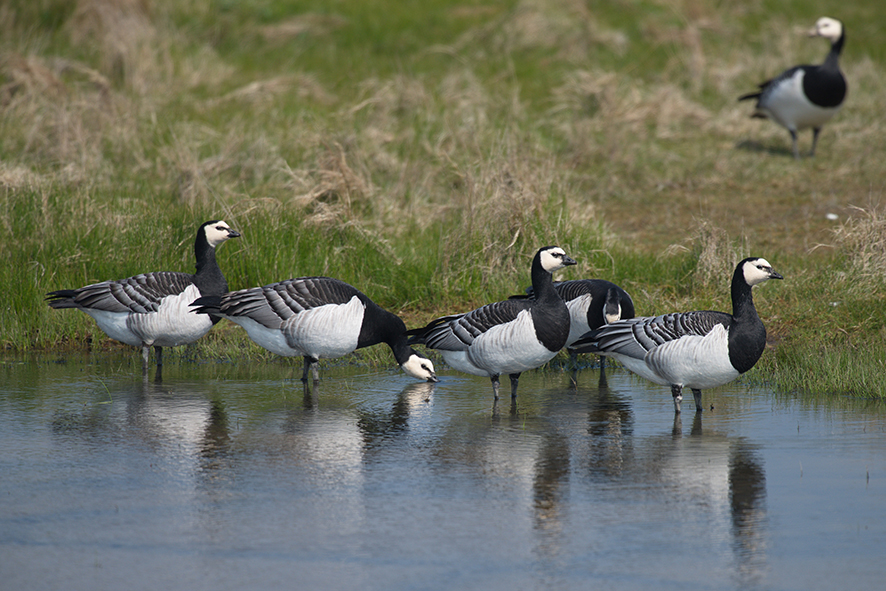Barnacle goose
- Medieval fasting monks ate goose meat
The barnacle goose is a relatively small goose that is easily recognised by its black neck and white head. It breeds in the arctic areas in Greenland on Svalbard and on islands in the White Sea. The barnacle goose’s arctic breeding area has prompted the creation of a tall story from medieval England. Here it was thought that the barnacle goose did not breed by laying eggs like other birds, but that they grew on driftwood in the sea. The myth was strengthened by the fact was that no one had ever seen the barnacle goose's nest, eggs or young. In addition, a species of crustacean called goose barnacles may have borne a slight resemblance to the neck and head on a barnacle goose. They grow, inter alia, on driftwood, and it was believed that the timber came from a living ”goose tree” where the goose barnacles had got stuck. In the Middle Ages it was forbidden to eat meat during Lent. But when the barnacle goose came from a ”goose tree” , it was not considered meat and therefore the monks could eat goose meat without breaking their fast.

Denmark’s largest goose flock by the Wadden Sea
The barnacle goose appears in huge flocks in the Wadden Sea, which is a leading migratory and wintering area for the species. For example, here you can see Denmark’s largest wild geese flocks with up to 55,000 geese. The number of barnacle geese has been rising rapidly in recent years because of the mild winters and the greater prevalence of winter green fields that provide the geese with better food possibilities in the winter season. The species has now also spread as a breeding bird to the Baltic and North Sea area.
Facts
The barnacle goose is a small goose with a length of 63 cm and a wingspan of 132-145 cm. It has a black neck, white face, grey back and light belly. It feeds on grass, herbs and grains and in the winter season it will often find its food on fields with winter crops. It breeds in the arctic areas in Greenland, on Svalbard and on islands in the White Sea, the Baltic Sea and the North Sea area. It migrates in the autumn to places including Scotland, Denmark and south along the European west coast.


